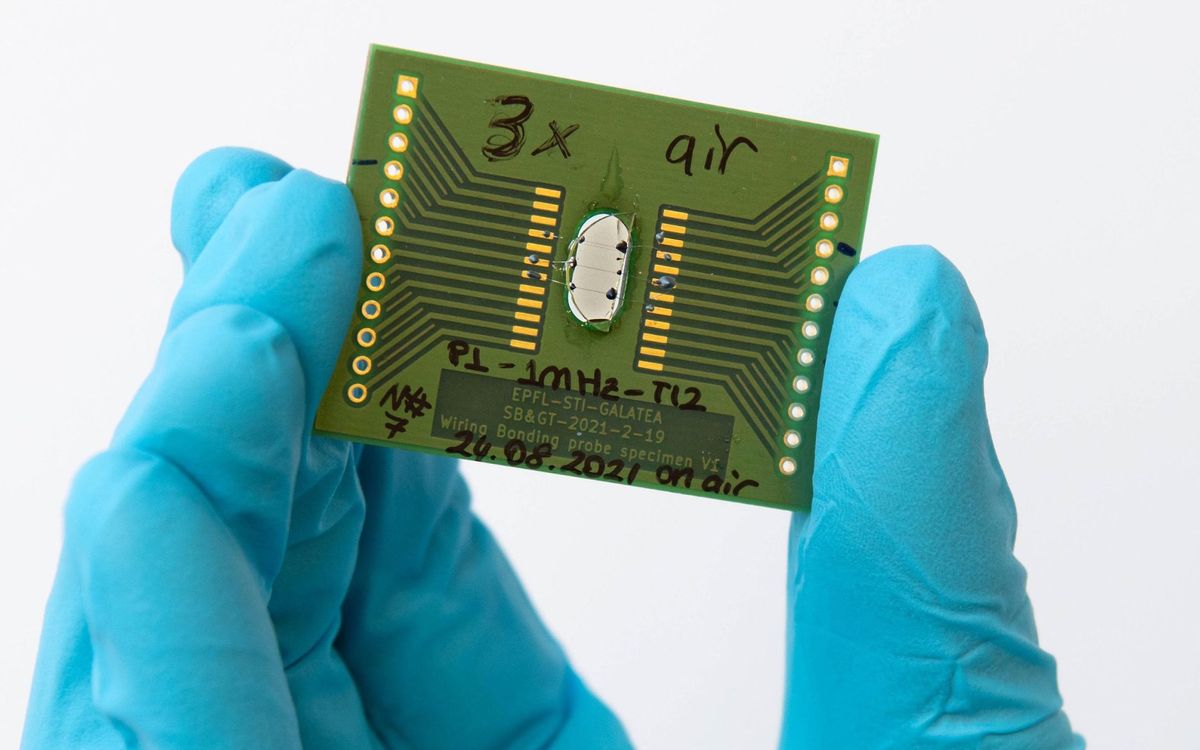Solar cells and glass are often both made from silicon. However, glass made, in part, from the element tellurium (two down and two over from silicon on the periodic table) has a peculiar and newly-discovered property. Shine ultrafast laser light on it, and it starts to behave like that other ubiquitous silicon item—the photovoltaic cell.
Researchers at the Tokyo Institute of Technology and the Swiss Federal Institute of Technology’s Galatea Lab in Neuchâtel, Switzerland shined femtosecond laser light onto tellurite glass to effectively create a semiconductor crystal that generates a current when exposed to light.
“The excitement surrounding this observation could trigger a flurry of follow-up studies considering its potential for industrialization.” —Yves Bellouard, Swiss Federal Institute of Technology
The implications of this discovery extend to the potential of a future where some kinds of windows might double as energy-generating surfaces, while sensors could seamlessly integrate into everyday objects.
Tellurite glass is different and distinct from silica-based glasses. Tellurite’s unique properties, including enhanced transparency in the mid-infrared region and higher solubility for rare-earth ions, already make it attractive for optical fibers and optical amplifiers. And while these applications are hardly new, tellurite has nevertheless to date remained more of a material for research and specialty applications.
However, by exposing the tellurite glass to a femtosecond laser, the researchers discovered the glass’s inner structure was broken up into a state that allowed for reformation into new phases of the material. For tellurite glass, as its structure was reformed, seeds consisting of clusters of tellurium atoms formed, and eventually grew into tellurium nanocrystals as the glass phase decomposed.
Using femtosecond lasers to spawn semiconducting nanocrystals could have an enormous impact on optoelectronics, says Yves Bellouard, an associate professor at Galatea Lab, who oversaw the research that was part of paper co-author Gözden Torun’s PhD thesis.
“In the specific framework of Torun’s thesis came this serendipitous and brilliant finding that a semiconducting tellurium nanocrystalline phase forms on the glass surface under laser exposure,” said Bellouard. Torun then found this new semiconducting material could generate a current when subjected to both UV light and the visible spectrum. “This motivated us to explore possible photo-conductive properties,” Bellouard added.
“What is particularly interesting with tellurite glass is that the laser-exposure end-product has interesting functional properties that are directly usable and that can easily be implemented in a device,” said Bellouard. “The excitement surrounding this observation could trigger a flurry of follow-up studies considering its potential for industrialization.”
While the present research effort used tellurite glass, Bellouard says in principle that this same effect should be able to be found in other forms of glass. Until the present paper, Bellouard says, there was no reason necessarily to explore how femtosecond lasers affected different kinds of glass. So more research in this newfound and unexpected field, he adds, is certainly warranted.
“This state of ‘warm-dense matter’ is a hot topic of study if I may say—no pun intended—as it has the potential to trigger the formation of unknown crystalline phases,” said Bellouard. “In essence, we create artificially conditions for unusual material phases to form.”
Amidst the excitement and optimism surrounding their discovery, the researchers say they’re aware of the challenges ahead. Scaling up the process for industrial applications would require concerted efforts and further optimization, Bellouard says. While the simplicity and versatility of the laser-writing process holds promise, he adds, there’s plenty of room for continued refinement of the technique.
Nonetheless, the prospect of turning ordinary glass surfaces into electricity-generating interfaces using light holds immense potential for future energy technologies.
The researchers published their results last month in the journal Physical Review Applied.
- A Bright Spot for Solar Windows Powered by Perovskites ›
- Next-Gen Solar Cells Can Harvest Indoor Lighting for IoT Devices ›
Dexter Johnson is a contributing editor at IEEE Spectrum, with a focus on nanotechnology.



